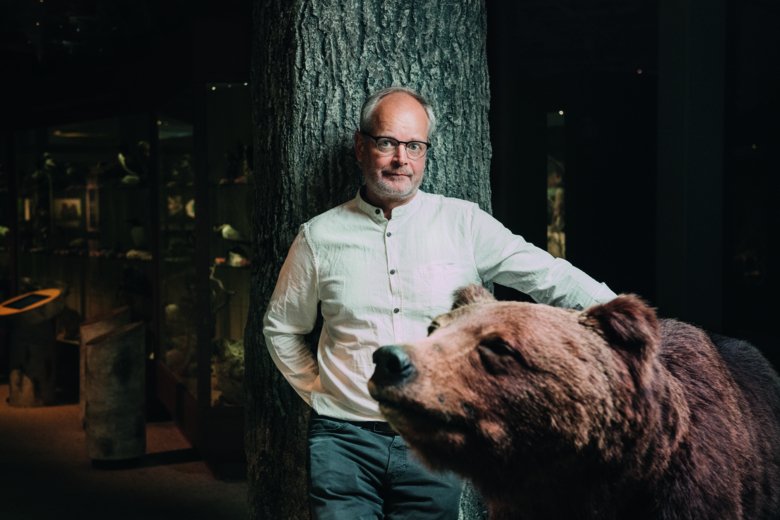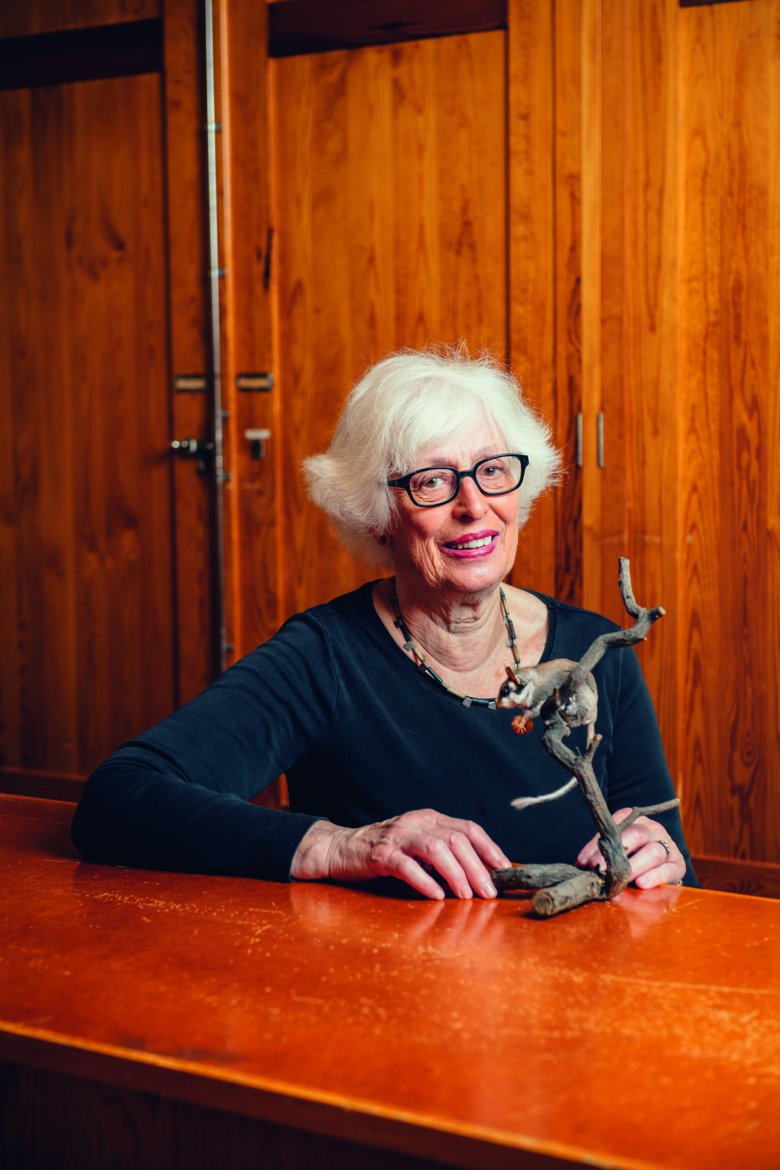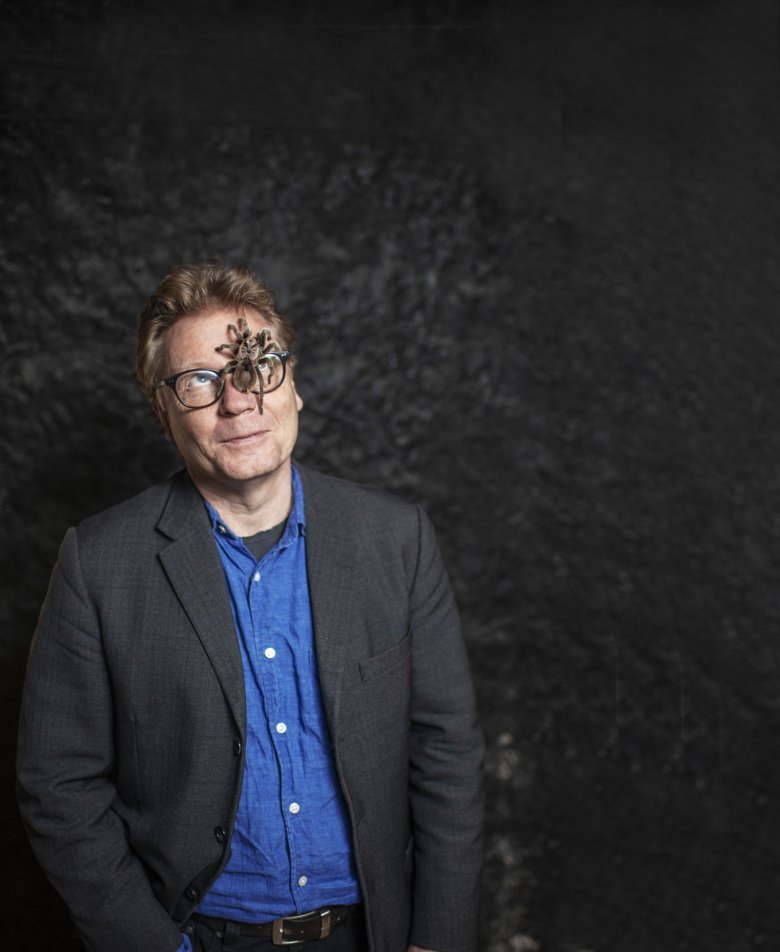When nature provides the model
Elephants do not get cancer and hummingbirds do not suffer from diabetes. What can we learn from their physiology? We met with three researchers who study nature to solve human problems.
Name: Peter Stenvinkel
Title: Professor of Nephrology at the Department of Clinical Science, Intervention and Technology, Karolinska Institutet.
Animals in the research: Wants to identify nutrients that could be used as medication for patients with kidney disease, among other things, through the study of bears.

“Special eating habits are what protects them”
“When I visited a national park in the USA, a guide there told me that bears don’t pee during the months they hibernate. As a kidney doctor this piqued my interest. Why do they not suffer from the serious complications that we see in patients with kidney disease? How can they survive at all? Today we know that the small amount of urine produced in the bears’ kidneys is reabsorbed into the bladder. But the strangest thing is maybe how the bears use the waste products they don’t excrete to, for example, rebuild muscle. Their bones are at least as strong in the winter as in the summer.
“Those of us who work with so-called biomimetics are inspired by nature and want to learn from wild animals how they have adapted over the course of their evolution. I have found that there is an awful lot to learn from veterinarians, biologists and zoologists. A few years ago we took a computer tomography scanner by truck to Orsa Predator Park to x-ray the bones of a number of bears both in the summer and winter. The aim was to see how the bone structure changes and why they do not develop osteoporosis despite lying still for so long. With humans, lying in bed causes osteoporosis and an increased risk of fractures.
“Bears can eat up to a quarter of a million berries per day before their winter hibernation, and we think that their special eating habits protect them. Patients with kidney disease often have a fairly poor diet because we advise them to reduce their intake of fruit, berries and vegetables that contain a lot of potassium, as this can be fatal for them. We will now examine whether medication that binds potassium would allow these patients to eat more healthy vegetables, fruits and berries.”
Name: Birgitta Strandvik
Title: Professor Emerita in Paediatrics at the University of Gothenburg, affiliated researcher at the Department of Biosciences and Nutrition, Karolinska Institutet.
Animals in the research: What can we learn about sleep by studying the exceptional fat metabolism of dormice during winter hibernation.

“Insomnia is a major problem”
“I have a friend in Normandy who is desperate because she has wild dormice sleeping in her roof. But I think it’s fascinating that these mice can go into hibernation all winter without the body sustaining any sort of damage. Can we learn something about the human ability to control one’s sleep through the study of dormice? Mice and humans are not so different when it comes to the composition of their cells. Insomnia is a major problem, so I hope that we can find a better way to improve sleep that does not involve all these sleep medications.
“We are now cooperating with Austrian veterinarians, and the 40-50 dormice we are studying are kept at a lab in Vienna. An increase in the exchange of knowledge with zoologists and veterinarians could provide additional knowledge and understanding when it comes to diseases, as the development in the animal kingdom is reflected in our own early development.
“As someone involved in fat research, am interested in the changing fat composition of dormice and how their metabolism adjusts during winter hibernation. We have been able to verify that the metabolic changes that occur in terms of fatty acids are the same in bears as in dormice. We are now studying the mechanism behind this disorder, which is easier to do with dormice than with bears. We suspect that there is some substance in the food of dormice that results in an altered gene expression and affects their metabolism, including their sleep state. We know that dormice, just like their relative the common Swedish dormouse, almost exclusively eat fruit and berries, so we are looking for the key there.”
Name: Jan Johansson
Title: Professor at the Department of Neurobiology, Care Sciences and Society, Karolinska Institutet.
Animals in the research: Investigating how spider thread protein can be used to produce artificial pulmonary surfactant for treating the lungs of premature babies, but also adults with lung damage.

“It was a wild idea”
“I’m no spider lover but I think they have many fascinating qualities, such as the fact that they are cannibals and good at spinning thread. They can spin different threads depending on the intended use, such as tensile and sticky prey capturing threads or strong safety lines to be able to quickly descend from a roof. The spiders go around with precursors for threads in liquid form, syrupy protein solutions stored in thread glands in the spider’s abdomen.
“We used the part of the spider protein that enables it to stay as a solution in much higher concentrations than is known to be the case for human proteins. It was a wild idea that could allow us to more easily produce artificial pulmonary surfactant, a special component in the lungs, which is lacking in premature babies. We have previously attempted to produce it using bacteria, but one of the difficulties was that clumps were formed. When I tried to pair the right spider thread protein with the pulmonary surfactant, it was a success. It was like the bacteria were fooled.
“There is now a clinical trial under way in the USA involving 120 premature babies. Our artificial surfactant is being compared with one that comes from pig lungs. The hypothesis is that our preparation is as effective but much easier to produce.
“I am thinking that we could test this on other lung diseases in adults as well. When we suffer major trauma, such as traffic accidents or burn injuries, and end up on a respirator, acute respiratory distress syndrome can occur and the lungs start to leak. Many of these patients could have a better chance of survival if we treated their lungs with the solution.”
Text: Maja Lunbäck, first published in Swedish in the magazine Medicinsk Vetenskap No 3/2019.
